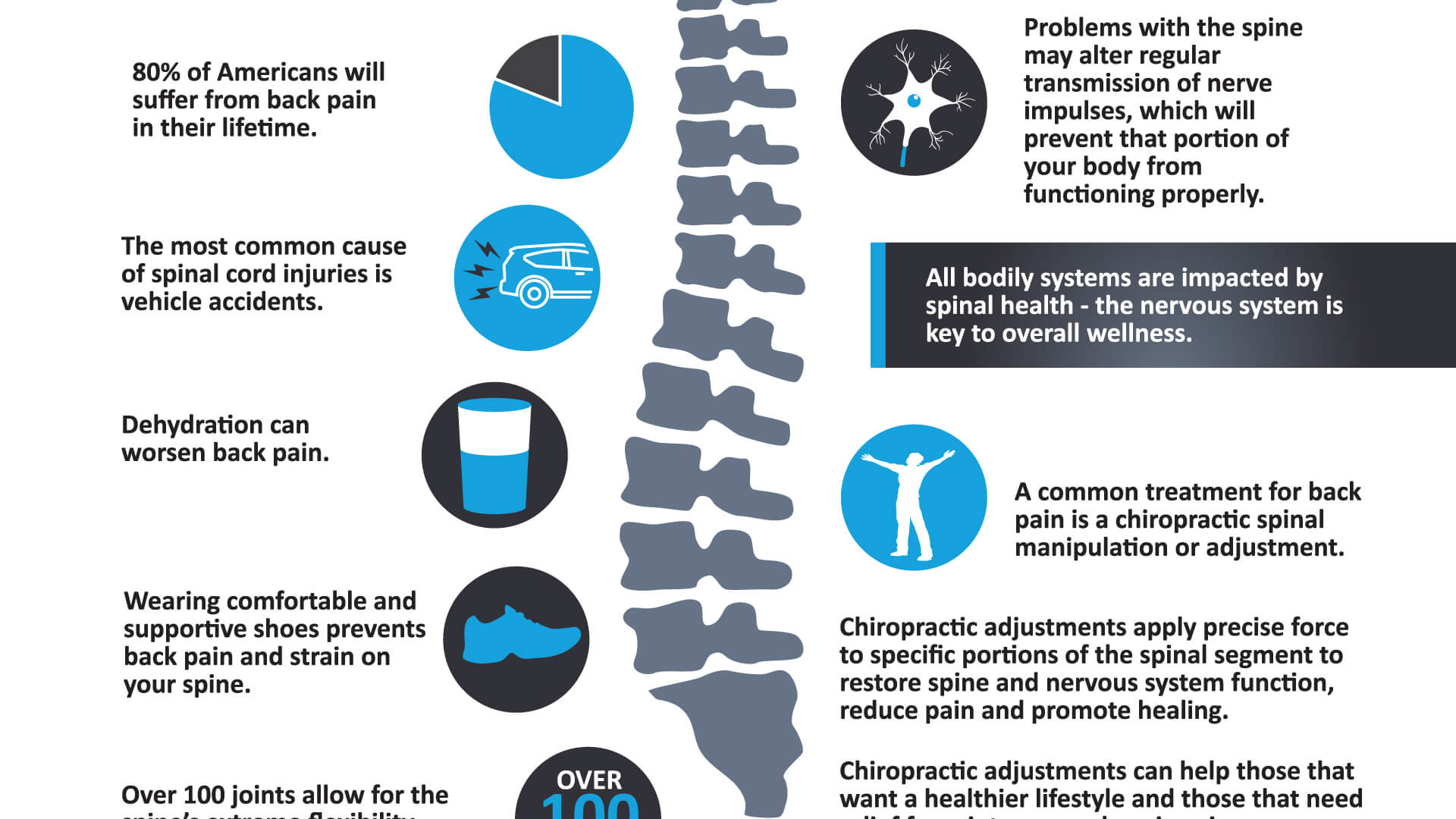Frequent Tasks That Contribute To Neck And Back Pain And Ways To Prevent Them
Frequent Tasks That Contribute To Neck And Back Pain And Ways To Prevent Them
Blog Article
Article Written By-Love Harper
Preserving proper stance and staying clear of common pitfalls in daily tasks can considerably affect your back health and wellness. From exactly how hop over to this site sit at your desk to how you raise heavy objects, tiny adjustments can make a large difference. Envision browse around this site without the nagging pain in the back that impedes your every move; the solution may be less complex than you think. By making a few tweaks to your daily behaviors, you could be on your way to a pain-free existence.
Poor Posture and Sedentary Way Of Living
Poor stance and an inactive lifestyle are two significant factors to back pain. When you slouch or suspicion over while resting or standing, you put unnecessary pressure on your back muscles and back. This can result in muscular tissue discrepancies, stress, and ultimately, persistent back pain. Additionally, sitting for extended periods without breaks or physical activity can compromise your back muscle mass and cause tightness and discomfort.
To combat inadequate stance, make a mindful effort to rest and stand straight with your shoulders back and straightened with your ears. Bear in mind to maintain your feet level on the ground and prevent crossing your legs for extended periods.
Integrating routine extending and enhancing workouts into your everyday routine can also aid improve your pose and relieve neck and back pain related to a sedentary lifestyle.
Incorrect Training Techniques
Incorrect lifting strategies can significantly contribute to neck and back pain and injuries. When you lift heavy objects, remember to bend your knees and use your legs to lift, rather than relying on your back muscle mass. Avoid twisting your body while training and keep the object near your body to reduce pressure on your back. It's vital to maintain a straight back and stay clear of rounding your shoulders while raising to stop unnecessary stress on your spinal column.
Always assess the weight of the things prior to raising it. If it's too heavy, request assistance or usage tools like a dolly or cart to carry it safely.
Keep in mind to take breaks throughout raising tasks to give your back muscular tissues an opportunity to rest and protect against overexertion. By applying appropriate training methods, you can prevent pain in the back and decrease the danger of injuries, guaranteeing your back remains healthy and balanced and solid for the long term.
Absence of Normal Workout and Extending
A less active way of living devoid of routine exercise and extending can dramatically contribute to pain in the back and pain. When you do not engage in physical activity, your muscles come to be weak and inflexible, causing poor pose and increased strain on your back. https://www.sandiegouniontribune.com/caregiver/news-for-caregivers/story/2022-02-15/vulnerable-immunocompromised-san-diegans-feel-left-behind-by-covid-public-health-policies helps strengthen the muscles that sustain your spinal column, improving security and decreasing the risk of neck and back pain. Incorporating extending into your routine can additionally boost versatility, stopping stiffness and pain in your back muscle mass.
To avoid pain in the back brought on by an absence of workout and extending, go for at the very least 30 minutes of modest physical activity most days of the week. Consist of workouts that target your core muscles, as a strong core can aid reduce pressure on your back.
Furthermore, take breaks to extend and relocate throughout the day, especially if you have a desk job. Basic stretches like touching your toes or doing shoulder rolls can aid alleviate tension and stop back pain. Focusing on routine workout and stretching can go a long way in preserving a healthy back and reducing discomfort.
Conclusion
So, bear in mind to sit up directly, lift with your legs, and remain active to avoid pain in the back. By making easy adjustments to your day-to-day routines, you can stay clear of the discomfort and limitations that feature back pain. Take care of your spine and muscle mass by exercising good pose, appropriate lifting strategies, and routine exercise. Your back will certainly thanks for it!
